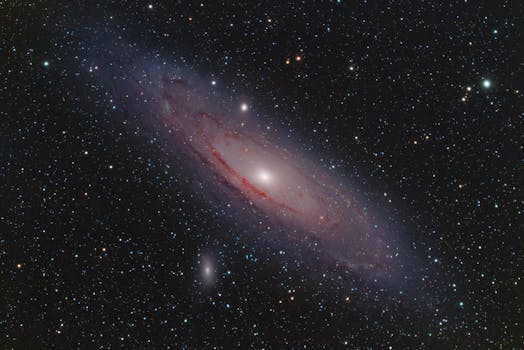
Introduction

The universe has long been a source of wonder and curiosity for humanity. Over the past few decades, significant breakthroughs in space exploration have not only expanded our understanding of the cosmos but have also reignited the age-old question: are we alone in the universe? This article delves into the latest advancements in space exploration and the implications for the search for extraterrestrial life.
Recent Breakthroughs in Space Exploration

Advancements in technology have paved the way for unprecedented exploration of our solar system and beyond. From Mars rovers to deep-space telescopes, several missions have provided invaluable data.
The Mars Perseverance Rover
Launched in July 2020, NASA’s Perseverance rover landed on Mars in February 2021. Its primary mission is to search for signs of ancient microbial life. Equipped with advanced scientific instruments, Perseverance is analyzing rock samples, taking high-resolution images, and even collecting samples to be returned to Earth in future missions.
The James Webb Space Telescope
Launched in December 2021, the James Webb Space Telescope (JWST) represents a significant leap in our ability to observe the universe. With its powerful infrared capabilities, JWST is designed to study the atmospheres of exoplanets, potentially revealing the presence of biomarkers-chemical indicators of life.
International Lunar Research Station
In collaboration with China, Russia has proposed the establishment of an International Lunar Research Station (ILRS) by the late 2020s. This project aims to create a habitat for long-term human presence on the Moon, facilitating further exploration of Mars and beyond.
The Search for Extraterrestrial Life

The quest to discover life beyond Earth is one of the most exciting aspects of space exploration. Scientists are employing various methods to identify potentially habitable environments.
Exoplanet Discoveries
With advancements in telescope technology, thousands of exoplanets have been discovered in the habitable zone of their stars. The Kepler Space Telescope, for instance, has identified over 2,300 confirmed exoplanets, many of which possess conditions that could support life.
Astrobiology: The Science of Life in the Universe
Astrobiology is a multidisciplinary field that combines biology, chemistry, and geology to study the potential for life in the universe. Researchers are investigating extreme environments on Earth, such as hydrothermal vents and acidic lakes, to understand how life might exist elsewhere.
SETI and the Search for Signals
The Search for Extraterrestrial Intelligence (SETI) employs radio telescopes to listen for signals from intelligent civilizations. Although no definitive signals have been detected yet, the search continues with advanced algorithms and improved technology.
Technological Innovations Paving the Way

Technological advancements are at the forefront of space exploration and the search for life. Here are some key innovations:
Artificial Intelligence and Machine Learning
AI and machine learning are revolutionizing data analysis in space exploration. These technologies help scientists process vast amounts of data collected from telescopes and space missions, identifying patterns that may indicate the presence of life.
Robotic Exploration
Robotic missions have become essential in exploring distant worlds. Rovers, landers, and orbiters are equipped with sophisticated instruments to conduct experiments and gather data without human presence.
Space Telescopes
Space-based observatories like Hubble and JWST allow astronomers to observe celestial phenomena without atmospheric interference, enhancing our understanding of the universe and the potential for life beyond Earth.
Takeaways

- Recent advancements in space exploration have significantly enhanced our understanding of the universe.
- The search for extraterrestrial life is ongoing, with numerous missions aimed at detecting signs of life beyond Earth.
- Technological innovations, including AI and robotic exploration, play a crucial role in advancing our exploration efforts.
Sources





